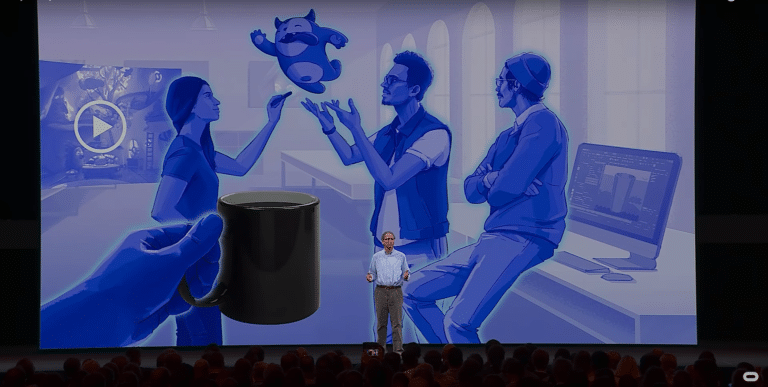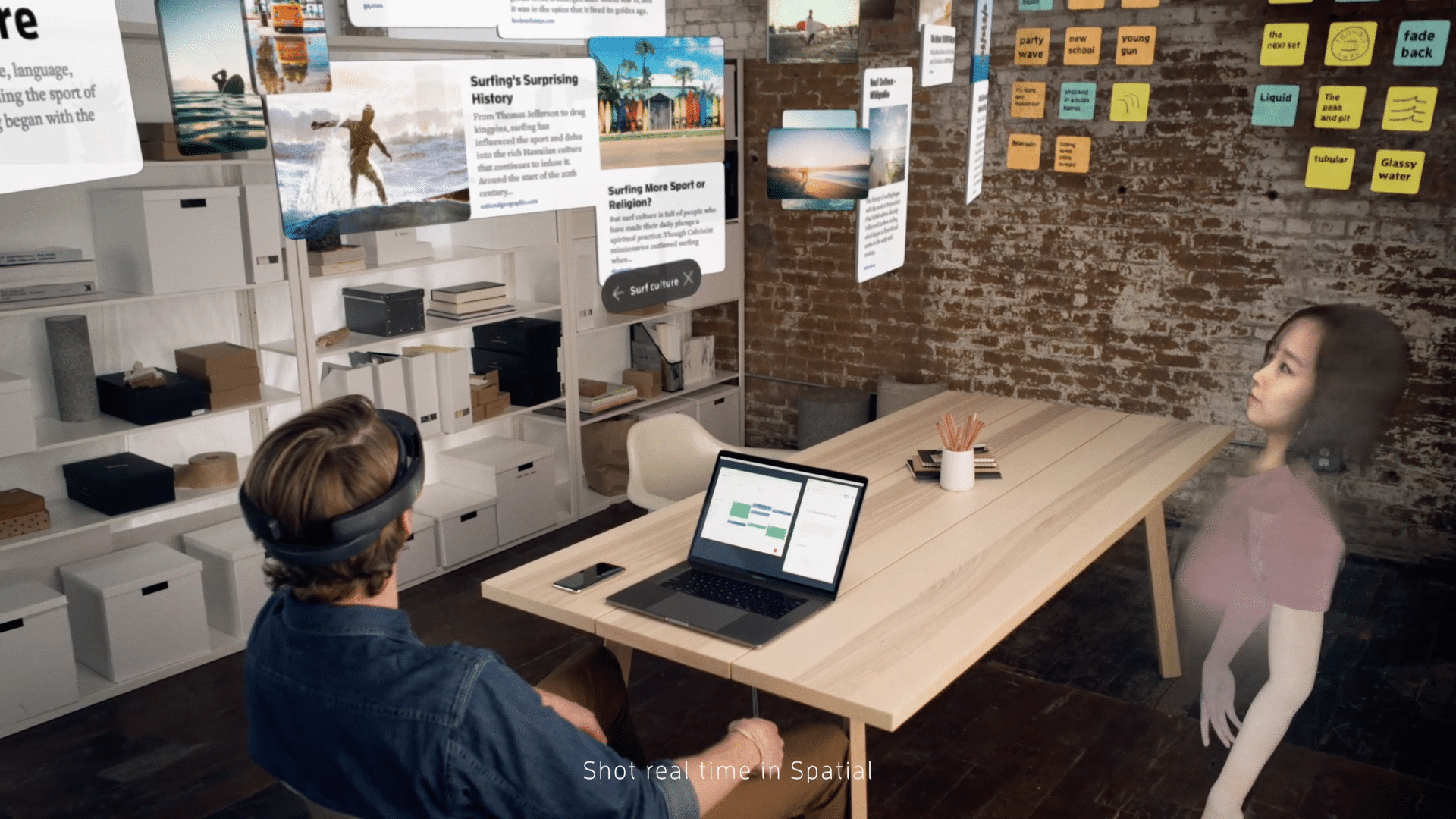
“Trendline” is AR Insider’s series that examines trends and events in spatial computing, and their strategic implications. For an indexed library of spatial computing insights, data, reports and multimedia, subscribe to ARtillery PRO.
We’re well past the days of listing off the areas that AR will transform our lives and work. With a retracting industry that’s disappointed in terms of consumer adoption, it’s all about the more pragmatic exercise of taking lessons from product and business models that are working today.
That said, if you’ll indulge us in some future-gazing, one potential AR use case has blipped on our radar screen a few times over the past week — at least enough to notice a trend. An AR-centric virtual office seems to be a design endpoint towards which influential players are signaling.
Before going into the evidence, what do we mean by “AR-centric virtual office.?” It’s essentially telecommuting on steroids. As we already see from innovative startups like Spatial, it enables far-flung teams to have human-like interaction with the convenience of remote collaboration.

Follow the Money
With Spatial as a conceptual model, what are other recent indicators? The first evidence comes from our favorite pastime of following the money. Tech giants’ financial motivations can inform their likely paths in AR investment. And that can be useful in “skating to where the puck is going.”
Along these lines, Mark Zuckerberg devoted space to AR in his year-end Facebook post. Among potential AR use cases, including those that best serve Facebook, he zeroed in on the AR virtual office to solve macro issues like affordable housing, urban overpopulation and transportation.
From his post (our emphasis):
Augmented and virtual reality are about delivering a sense of presence — the feeling that you’re right there with another person or in another place. Instead of having devices that take us away from the people around us, the next platform will help us be more present with each other and will help the technology get out of the way. Even though some of the early devices seem clunky, I think these will be the most human and social technology platforms anyone has built yet.
The ability to be “present” anywhere will also help us address some of the biggest social issues of our day — like ballooning housing costs and inequality of opportunity by geography. Today, many people feel like they have to move to cities because that’s where the jobs are. But there isn’t enough housing in many cities, so housing costs are skyrocketing while quality of living is decreasing. Imagine if you could live anywhere you chose and access any job anywhere else. If we deliver on what we’re building, this should be much closer to reality by 2030.

Validated Intentions
Though this is notable, we’ll make the quick caveat that there is at least some level of PR appeasement happening here. Facebook’s turbulent 2019 no doubt compels a focus on matters that are on the altruistic side of the spectrum when making any such public statements.
However, we can validate Zuckerberg’s intention here by tracing it back to previous statements. Facebook Reality Labs’ CTO Michael Abrash discussed these very points in his OC5 conference address. It’s clear from repeat mentions that this is a key waypoint on Facebook’s AR roadmap.
And if that’s the case, Zuckerberg’s statements are significant given the “follow the money” principle. In fact, we don’t need much more evidence of Facebook’s AR devotion. As examined recently, it’s spending more than anyone on an AR future (more numbers to come next week).
Meanwhile, other evidence of investment in the virtual office comes from Varjo. At CES last week, it demo’d its “workspace” concept in which its AR-capable (via passthrough video) XR-1 headset shows virtual monitors and enables co-presence around various 2D and 3D objects, a la Spatial.
Like with Facebook, this has practical barriers to will be hammered out over the coming years. Form-factor realities like an ocluded headset could preclude job functions with motion or safety issues, but it’s suited for design work and is a compelling vision from the highly spec’d XR-1.
Hitting the Right Marks
Panning back, one thing that makes the AR virtual office compelling is that it scores high on viability for consumer traction. As we’ve examined, AR killer apps will alleviate sizable and tangible pain points for large subsets of the population. Eliminating your commute likely fits the bill.
Per Zuckerberg’s comments, it also transcends a consumer-value tradeoff on an individual basis and has more value at macro levels. We’re talking things like alleviating population density, greater candidate pools for a given job, workplace diversity and other things that signal broader appeal.
Sticking with the theme of viability, AR telepresence however scores low on realistic near-term arrival. As outlined by Abrash in the aforementioned talk, technical requirements for full immersion make it a longer-term vision. Zuckerberg is explicit in his confidence for breakthrough this decade.
“At some point in the 2020s, we will get breakthrough augmented reality glasses that will redefine our relationship with technology,” he said during the same annual Facebook post. “And when that happens, the tech will be ripe for alleviating geographically-imposed inequality.”
For deeper XR data and intelligence, join ARtillery PRO and subscribe to the free AR Insider Weekly newsletter.
Disclosure: AR Insider has no financial stake in the companies mentioned in this post, nor received payment for its production. Disclosure and ethics policy can be seen here.
